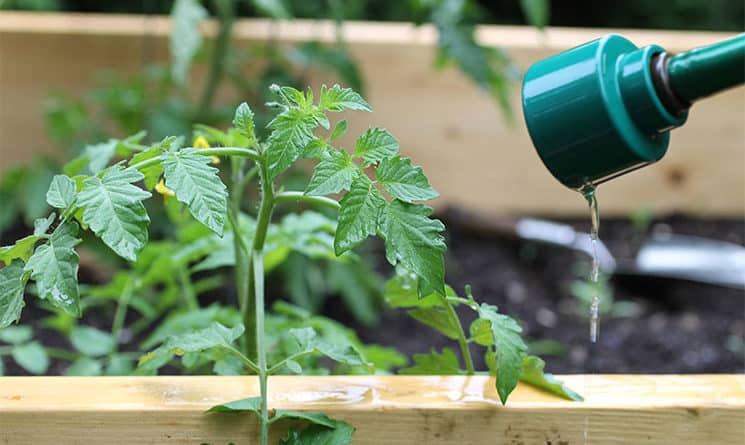Editor’s Note: The University of New Hampshire Cooperative Extension provides weekly gardening columns in which Jeremy DeLisle answers questions from local gardeners.
Q: We bought our home two years ago and have been planting our landscape ever since. Do you have any advice to help our trees and shrubs continue with establishment and recover from drought stress? Should I fertilize now to help them grow? — Mary P of Concord
A: Fertilization with nitrogen-containing fertilizers is not recommended after mid-summer, as this encourages new tender growth that may not sufficiently harden off before cold temperatures arrive. This new tip growth is also the first part of the plant to be sacrificed in order for trees and shrubs to preserve themselves under stressful conditions.
Normally, soils showing a deficiency in phosphorus or potassium could be fertilized during the fall after shoot growth has stopped. The majority of root growth happens in early spring and fall while soil temperatures remain above freezing. Don’t fertilize during drought conditions as salts in some fertilizers can enhance drought damage, causing more harm than good without sufficient soil moisture.
Indicators of drought-stressed plants
Some of the symptoms of drought stress include wilting leaves, branch tip dieback, early leaf drop, leaf scorch, leaf yellowing, and early fall coloring. Bark splitting or cracking can also occur under extreme drought conditions.
Water appropriately
Water newly established plantings until the ground freezes. A good rule of thumb is that trees and shrubs require one growing season for every inch of trunk diameter for establishment. Therefore, a tree with a two-inch diameter trunk would take two growing seasons under normal conditions for establishment. Water slowly and deeply to moisten the soil to a depth of at least eight inches, while 12 inches is ideal. Be sure to know your current town policy on water restrictions.
A five-gallon bucket with small holes drilled in the bottom and placed within the drip line of your plants, ideally filled with rainwater you’ve collected in a catchment system, makes for an easy watering method and allows you to easily keep track of how much each plant receives. A few buckets can be placed around the drip line to apply the proper amount of water in a single application.
Soaker hoses and drip emitters are good options as well. How much water to apply is somewhat dependent on your soil type, however, the entire area below the drip line should be watered and mulched to get the most from every drop.
How much water the tree needs depends on its size. Generally, 10 gallons of water for every inch of trunk diameter at knee height should be applied three times each month until the ground freezes while drought conditions persist. Flow meters installed in-line, the five-gallon bucket method, or emitter rates on drip systems can all be used to help track usage.
A few additional suggestions
Dead, diseased, damaged, and insect-infested branches should be removed now. These can lead to secondary issues and further weaken already stressed plants. Additionally, keep in mind that many trees and shrubs can be harmed by herbicide applications to the lawn. Consider the fact that trees and shrubs are much more expensive to replace than grass in your lawn. With water this scarce, if the choice comes down to one or the other, savvy gardeners will allocate available water to their trees and shrubs, knowing that their grass can be reseeded and established quickly under more suitable conditions.
Jeremy DeLisle is the program coordinator for the UNH Cooperative Extension Education Center. The center answers questions about gardening and more at answers@unh.edu, or by calling 877-398-4769 Monday through Friday, between 9 a.m. and 2 p.m.

